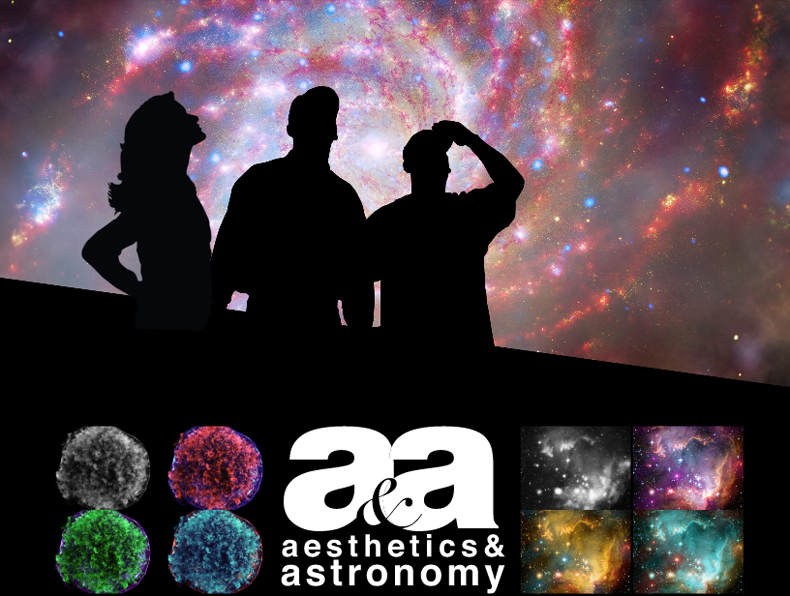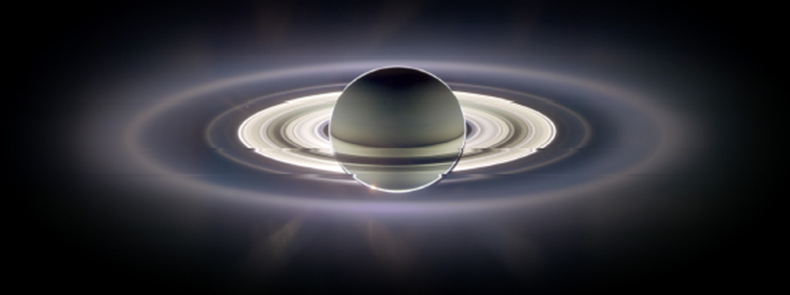
The Aesthetics & Astronomy project studies the perception of multi-wavelength astronomical imagery and the effects of the scientific and artistic choices in processing astronomical data. The images come from a variety of space and groundbased observatories, including NASA's Chandra X-ray Observatory, Hubble Space Telescope, Spitzer Space Telescope, the Solar Dynamics Observatory, the Very Large Array, and many others.
Research and evaluation of such data can benefit astronomy across the electromagnetic spectrum of astronomical images, and may help visualization of data in other scientific disciplines.
Our Top 5 Findings
1 THAT STOVE IS BLUE HOT!
Scientific images are often enhanced with color that is based on physics and the wavelengths which are being displayed. For example, blue is often used to indicate hot areas; red for cool. This might be a different palette from what the public expects based on their everyday experience, in which red often indicates hot and blue cold. Color is something that needs to be carefully explained to ensure understanding.
2 FROM SCIENCE TO WOW AND BACK AGAIN.
When looking at space images, astrophysicists start by thinking about the data and work up to the “wow” of an image. Non-experts, on the other hand, typically do the opposite. They are grabbed first by the awe of an image but ultimately want to understand the science. They also want to know how to understand an image in the way that experts do. This suggests that a “fuller story” be told to audiences.
3 DRAWING PEOPLE IN.
How do you attract people to science? Images accompanied by a strong, jargon-free narrative that tells a story can help. Also effective is the use of analogies to help explain complex or foreign subject matter, and leading questions that draw the person into wanting to know more.
4 IS BIGGER BETTER?
With screen size, bigger is generally better for making an impact with science visuals. However, information is increasingly consumed on tablets, smart phones, and other small devices. Presentations of images and their explanations must work and impress on devices with smaller screens.
5 SCALING UP.
Science, especially astronomy, involves objects and events on scales that are difficult to imagine. Both experts and non-experts prefer having anchor points, or references, to better understand the scale of the science being discussed. For example, providing a comparison to how many Earths would fit in an image depicted adds to comprehension and enjoyment.
Selected Publications:
Smith, L.S., Smith, J.K., Arcand K.K., Smith, R.K, Bookbinder, J., "Aesthetics and Astronomy: How Labels Affect Understanding and Appreciating Deep Space Images," Curator, 2014.
Smith, L. F., Arcand, K. K., Smith, J. K., Smith, R. K., Bookbinder, J. Is That Real? Understanding Astronomical Images. Journal of Media and Communication Studies, 2015.
Smith, L.S., Arcand K.K., Smith, J.K., Smith, R.K, Bookbinder, J., Watzke, M. “Examining Perceptions Of Astronomy Images Across Mobile Platforms” JCOM Science Communication Journal, 2014.
Arcand, K.K., Watzke, M., Smith, L.S., Smith, J.K. "Surveying Aesthetics & Astronomy: A project exploring the public's perception of astronomy images and the science within" Communicating Astronomy with the Public, 2010.
Smith, L.S., Smith, J.K, Arcand K.K., Smith, R.K, Bookbinder, J., Keach, K. Aesthetics and Astronomy: Studying the public's perception and understanding of imagery from space. Science Communication, 2010.

Astronomical images exist at an intersection of science and art, of information and aesthetics, of the contextual and the visual. In general, images of science resonate with both expert and non-expert populations. They inspire awe, but also have the ability to be powerful tools for communication. If, as the old adage claims, "seeing is believing" there is a need for a greater understanding of the impact of such images on their intended audiences to inform the process of image creation and dissemination.
By studying how people from different backgrounds perceive scientific imagery, we can learn how this information is received, and can systematically examine ways to improve the production of images to increase comprehension of their underlying messages.
